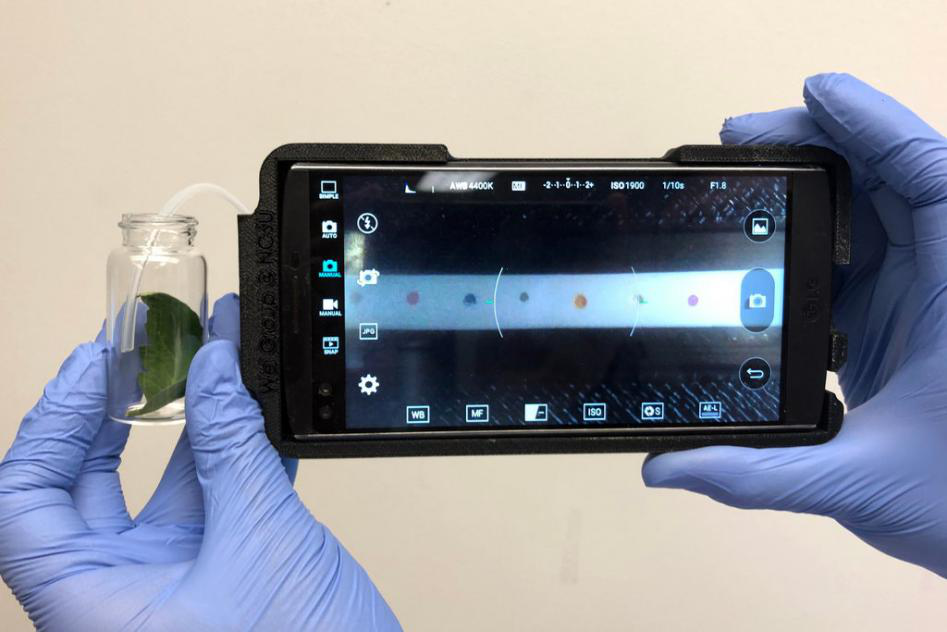
Late blight is a common disease of plants such as tomatoes and potatoes, capable of wiping out entire crops on commercial-scale fields. Caused by a fungus-like pathogen, it first appears as black or brown lesions on leaves, stems, fruit or tubers. If conditions are favorable, it can quickly spread to other plants through wet soil and as wind-scattered spores.
In the mid-nineteenth century, late blight famously caused the Irish potato famine. Today it still causes more than 6.7 billion dollars in annual losses worldwide. Small farms and organic growers are often the hardest hit, because they have fewer resources to identify and treat the disease.
But farmers may have a new weapon to add to the arsenal. The technology, designed by researchers at North Carolina State University, relies on the science of subtle plant odors, and it can recognize sick plants early by employing a simple test strip that plugs into a reader on a smartphone.
Plants emit signaling chemicals from their leaves, not unlike the pheromones released by humans. “If a plant is diseased, the type and concentration of these volatile organic compounds changes,” said Qingshan Wei, a biomolecular engineer at NC State University. By sampling a plant’s emission profile, a farmer can assess whether or not a sample of his crop is infected, Dr. Wei said.
The research group also hopes to custom-make the technology for other crop pathogens, which continue to emerge as climate change and global trade increase the stress on agricultural systems. “This is an important step in improving global food security,” Dr. Wei said.
本时文内容由奇速英语国际教育研究院原创编写,未经书面授权,禁止复制和任何商业用途,版权所有,侵权必究!(作者投稿及时文阅读定制请联系微信:400-1000-028)
1.What’s the best title of the passage?
A A biomolecular engineer at NC State University
B A common disease of plants
C An Irish potato famine caused by late blight
D A new way to fight crop disease with a smartphone
解析:选D。主旨大意题。通读全文,文章介绍了一种用智能手机对抗农作物疾病的新方法,故选D。
2.According to the passage, late blight _______.
A first appears as white or red lesions on leaves, stems, fruit or tubers
B never spreads to other plants through wet soil and as wind-scattered spores
C famously caused the Irish potato famine in the mid-nineteenth century
D still causes more than 6.7 billion dollars losses every month in the world
解析:选C。细节理解题。由第二段第一句In the mid-nineteenth century, late blight famously caused the Irish potato famine.可知在19世纪中期,晚疫病引起了著名的爱尔兰马铃薯饥荒。故选C。
3.Which opinion might not Dr. Wei agree with?
A The type and concentration of volatile organic compounds never changes.
B Plants give out signaling chemicals from their leaves.
C A farmer can assess whether or not a sample of his crop is infected with the technology.
D The technology for crop pathogens is an important step in improving global food security.
解析:选A。细节理解题。由第四段第二句魏博士的话可知:如果植物患病,这些挥发性有机化合物的类型和浓度就会发生变化,故选A。
4.The underlined phrase “a new weapon” in Paragraph 3 refers to ________ .
A the disease
B the technology
C the smartphone
D the research team
解析:选B。词意指代题。由划线词组后的句子:这项由北卡罗来纳州立大学的研究人员设计的技术依赖于微妙的植物气味科学……可知,新武器指的是这项用智能手机对抗农作物疾病的技术,故选B。